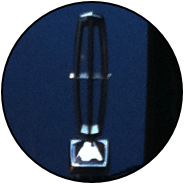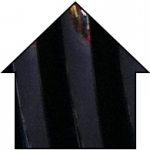Learn More lets you drill down into the study’s reports and special features to your heart’s delight. You can also return to its Home Page, or Get Started has to tools to secure your sponsorship before someone else does!
Although the study ran in 2014 and sponsorships are no longer available, CSRA can produce all the reports for any business, individually. Other than the sponsorship and timeline sections, the information here pertains to individual clients today.
Frequently Asked Questions
What’s the timing?
 It’s tight. Customer Night Out will kick off in mid-April and run through May. For more details, see the graphical timeline on the study home page, or here is its version with explanation bubbles. Here are the study’s key milestones (estimated):
It’s tight. Customer Night Out will kick off in mid-April and run through May. For more details, see the graphical timeline on the study home page, or here is its version with explanation bubbles. Here are the study’s key milestones (estimated):
- April 2-28: enrollment continues until critical mass reached. I estimate it will take about ten days. We also schedule Plum and Gold sponsor interviews here.
- April 30: kickoff. Analysis starts, enrollment outreach continues.
- May 20: Synthesizing results and writing reports. Deliver the General Report to all sponsors. Category Reports follow.
- May 25: Individual Reports written and strategy sessions scheduled.
How are the General Report, Category Reports and Individual Reports different?
The General Report will have these sections (they will probably change based on results, but this will give you an idea):
- The Business Night Out section describes several “types” of nights out that are most relevant to sponsors. It will create models that make it easier for sponsors to understand and use results.
- The Friends/Family Night Out section identifies high-stakes social nights out in which businesses have the biggest impact on customers.
- The Romance Night Out section describes key types of romantic evenings that are most relevant to sponsors.
- Each section identifies and describes the key customer actors (i.e. types of hosts and guests) as well as the types of business that play the most important roles.
- Connection points describes how each kind of business affects the customer in various types of nights out. For example, taxis and restaurants each influence how the customer feels on the night out, and the customer then affects other businesses.
- I back up all analysis and models with data, so you can see for yourself the sources of the analysis. The general report will have dozens of links to customer interactions.
- Graphs and illustrations will help visualize the meaning of the data.
- Recommendations will advise sponsors on key opportunities and friction points they—and their competitors—have with high-paying customers. Practical recommendations will detail how you can use your insight into customers face to face and digitally. They show how to use the findings to make the biggest difference in customers’ experience.
Think of the Category Reports as in-depth data, analysis and advice for a specific type of business. They are the deep dive into the category. Their recommendations are more specific to the type of business.
 Competitive analysis reveals in depth who is relating to business, friends/family and romance customers the best, and the worst.
Competitive analysis reveals in depth who is relating to business, friends/family and romance customers the best, and the worst.- Social media advice shows best and worst practices for interacting with customers on common platforms like Facebook and Twitter as well as in forums where customers are talking intensively about their nights out.
- Customer insights identifies what the most profitable customers really find important about that category. It may surprise you.
- Guidance for using customer reviews to your advantage, so you can outperform in your category. In most cases, when you know how to interact, exceptional customers have a limited impact on your reputation.
- Customer service advice shows best and worst practices for interacting with customers on-premises.
- Connections advice shows you in detail how other types of business affect customer experience and and their experience with you. For example, restaurants might find that many of their customers have unhappy experiences with some limousine services, so they’re in foul moods when they arrive at the restaurant. CSRA’s analysis of limousine and other transport allows us to suggest ways for you to suggest other ways to get to your premises or how to work with transport businesses to serve customers better.
Individual Reports will only be prepared for Plum sponsors. They are another step in specificity beyond Category Reports. Strategy Sessions focus on applying key findings from Individual/Category/General Reports to Plum sponsors’ businesses, working with management teams. Here are some highlights:
- Individual Reports have an explicit focus on Plum sponsors’ customers (business, friends/family, romance), what they want, how they act, what they say about the company and competitors.
- Gold and Plum sponsors get interviews in which they explain their understanding of their customers, and their questions. Based on this understanding, I perform extra searches and gather extra data, which I synthesize and explain in Category Reports and Individual Reports.
- Keep in mind that Plum and Gold sponsors also receive their Category Reports and the General Report, so Individual Reports build on those and focus on unique data, issues and conclusions.
- Recommendations are likewise specific to the company, not only the category. They include how to manage reviews, how to interact in discussion forums, now to interact on company social media presences. In some cases, I will recommend ideas for on-premises interactions based on what I learn from analyzing dozens or hundreds of online interactions and the interview with the Plum sponsor team.
- A key benefit of Plum sponsorship is the in-person strategy session at which I present the findings of all three reports to the Plum sponsor team, and we strategize for how they can implement the results in practical ways.
Can you drill down on category exclusivity?
 Category exclusivity comes with Plum and Gold sponsorships. It lets them prevent competitors in the same business category from ordering the Category Report, which gives them exclusive access to “their” Category Report for a period of three months, enough time to use its information to create competitive advantage.
Category exclusivity comes with Plum and Gold sponsorships. It lets them prevent competitors in the same business category from ordering the Category Report, which gives them exclusive access to “their” Category Report for a period of three months, enough time to use its information to create competitive advantage.
Category exclusivity is governed by three simple rules:
- It only applies within categories (Entertainment, Transport, Restaurant, Hotel, Bar, Salon, Florist, Dry cleaner).
- Timing takes precedence. It only prevents sponsors who want to come in after a Plum or Gold sponsorship is effective, not before.
- It applies to sponsors at or below the same sponsor level. For example, the bar Gold sponsorship prevents any other bar from sponsoring Gold or Silver after its effective date (when payment is confirmed). However, a bar could sponsor Plum after a Gold sponsor commits. Plum prevents any subsequent Gold or Silver sponsorships.
During enrollment, I’ll post confirmed Plum and Gold sponsorships on this page to let you know when a category has restrictions. Remember, too, category exclusivity is valid for three months; a Bronze sponsor could buy it afterward.
What if my business doesn’t fit a category?
If you are interested in the study but are outside any category, you cannot be a regular sponsor, but contact me to inquire about an associate sponsorship during Enrollment, so you can buy the General Report or Category Report(s) and get pre-study pricing.
Can we change our sponsor level after we’ve committed?

You can upgrade sponsor levels if an upgrade is available for your category. If you sponsor Gold, you can upgrade to Plum if there’s no Plum sponsor for your category yet. Silver is only available if someone else in your category hasn’t already sponsored Plum or Gold. If you sponsor Silver and no Plum or Gold exists in your category, you can upgrade. Bronze can upgrade as long as no one else has sponsored above Bronze in that category. And, no, you cannot change categories!
What is “pre-study pricing”?
In return for their sponsorship of the study itself, sponsors will pay less for the research than companies who want to buy it afterwards. The General Report will be available for purchase after the study, as will Category Reports for categories that don’t have Plum or Gold sponsors. All Category Reports will be available after the three-month Category Exclusivity expires.
Why “business,” “friends/family” and “romance”?
These are usually the customers that spend the most, so when you show you understand them and care about them, you deepen their commitment to you. They spend the most because they have a lot at stake. Your business customers are trying to develop more business for their firms, so they want to impress their clients and prospects with inviting them to a night out. Nights out with friends help people increase their social status, which is very serious. Family entertaining, when you analyze it from a sociological point of view as I do, is all about deepening people’s highest value relationships—or earning respect from extended family members and in-laws. I think romance is self-explanatory ;^).
We don’t have the staff to do social media, so can we still use this?
The study can help you in two ways. By now, most local businesses do social media, but very inconsistently and ineffectively. The study will reveal where your biggest opportunities are, so the little time you do have you can spend most efficiently. Second, you are encountering these customers on-premises (“in-store”) every day, so the study helps you to understand and serve them better face to face. Use it to educate employees about customers’ issues and brainstorm about what you could do to show your care and understanding. When you employees understand (and can see via the links) customers’ experiences, it reduces the “us and them” mentality some employees have.
Can CSRA help us to do experiential social media?
Yes. CSRA serves clients in several ways. We prepare social business (media) strategy for clients to show them how they can use experiential to achieve maximum business impact for minimum cost and time investment, so this study is square in our core competency. During execution, we mentor clients in how to practice social media themselves. Clients can also outsource social media to us; in these cases, we represent them online. A likely sequence for local businesses that don’t have social media teams is to begin by outsourcing, prove social’s profitability to them, then start creating a team. We can guide them through the whole cycle.
We’re already doing social media, so how is this different?
CSRA developed experiential social media based on thousands of hours of client work in which teams studied behavior in digital social venues. Experiential focuses on understanding customer experience, so you can serve customers better, on-premises and online. Moreover, it shows you how to serve your best customers better, so they love you more and buy more from you.
Social media (normal) focuses on promoting your business, brand, service and products mostly using your Facebook, Twitter, Instagram and Pinterest accounts. It’s very complementary to experiential social media, which is most active on third party sites where customers are. Each business has its unique character and most profitable customers, so experiential social media identifies issues and opportunities for businesses to make the most impact on them.
We don’t do social media since it hasn’t produced business results in other businesses I know, so why should we do this?
 Most businesses use social media like a digital sandwich board. Social media puts on its makeup and walks busy streets (Facebook, Twitter) at lunchtime or rush hour. Some businesses drive more business with promotions, but these customers are less profitable. It’s inefficient. Experiential social media takes a completely different approach. Over the last eight years, I’ve developed a method that fuses sociology, software development, psychology and digital tools that makes it very efficient to interact with people who have very specific motivations for using services (i.e. on their nights out). By serving customers that spend the most, you can grow your business more profitably.
Most businesses use social media like a digital sandwich board. Social media puts on its makeup and walks busy streets (Facebook, Twitter) at lunchtime or rush hour. Some businesses drive more business with promotions, but these customers are less profitable. It’s inefficient. Experiential social media takes a completely different approach. Over the last eight years, I’ve developed a method that fuses sociology, software development, psychology and digital tools that makes it very efficient to interact with people who have very specific motivations for using services (i.e. on their nights out). By serving customers that spend the most, you can grow your business more profitably.
What’s your analytical process like?
I developed the Social Network Roadmap(SM) in 2008 and have been using it with global brands since then. Its SNR Analytics toolset measures many things, but the main focus is depth and trust of relationships, so clients can measure how their relationships with customers change over time. IBM has found in its global retail customer study that customers spend more at businesses they trust—and this trend is intensifying. Most social media monitoring tools measure things like brand mentions and sentiment, but these are too general to be terribly actionable. In Customer Night Out, I approach customer experience from customers’ standpoints. I find and analyze their conversations about planning, having and remembering their nights out. I study the connections among their experiences with various services, and how these all work together to make customer experiences more positive or negative. I identify what businesses do that has the most impact, what customers appreciate the most and why.
Who is CSRA?
![]() CSRA refers to me, Christopher S. Rollyson, and my global network of experts and specialists in design, management consulting, software development, sociology, culture and many other disciplines. I have advised global brands, startups and small businesses for thirty years, and I’ve led marketing for several businesses.
CSRA refers to me, Christopher S. Rollyson, and my global network of experts and specialists in design, management consulting, software development, sociology, culture and many other disciplines. I have advised global brands, startups and small businesses for thirty years, and I’ve led marketing for several businesses.
I create engagement teams from a large reservoir of people with whom I’ve built relationships over the years, so I get who is perfectly suited for clients’ initiatives, not only staffers that happen to be available at that time.


Leave a Reply
You must be logged in to post a comment.